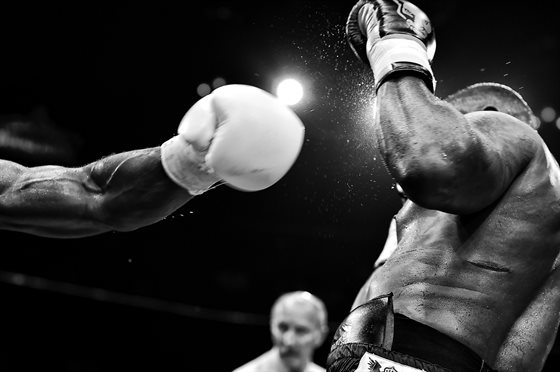A research project led by a De Montfort University Leicester (DMU) academic analysing the involvement of immigrants and minority groups in British boxing has been turned into a mini documentary series.
Dr David Dee, Associate Professor/Reader in Modern History, is undertaking research to understand how and why boxing has impacted immigrant and minority identity, looking at the nature and extent of participation and interest in the sport among the Jewish, Irish, Traveller, Italian, South-Asian and Black British communities.

Image: Johann Walter Bantz/Unsplash
The findings from the study will eventually be published in a new book by Dr Dee but in the meantime, his work so far has been documented in a five-part short film series commissioned by the Gerda Henkel Foundation, which also funded the research, and filmed on the DMU campus.
Each of the first four episodes focuses on a different era of boxing with case studies of fighters from each generation, with the final episode featuring an interview with Dr Dee about his research and the impact he hopes it will have.
“Boxing is a sport very closely associated with immigrants and minority groups,” he explained. “The purpose of my research is to examine and understand the history behind the sport in the context of the construction and deconstruction of ethnic and racial stereotypes, and interactions between these groups and majority society.
“While the research is ongoing, these five short films offer some initial insights into what I have found so far during the project.”
Episode one looks at the life and career of bare-knuckle boxer Daniel Mendoza, who was born in 1764 to Jewish immigrant parents. Mendoza went on to become English Champion, and as a result he became a celebrity and media star who mixed with royalty, and this provided a new perspective on the Jewish minority in Britain.
The second episode tells the story of Larry Gains and Len Johnson, who were both successful in the 1920s and 1930s but barred from fighting for the British title due to the ‘colour bar’ – an official British Board of Boxing Control regulation that was in force between 1911-1948 that stopped boxers who didn’t have two white parents from fighting for British titles.
“What has surprised me the most during my research is just how little coverage there is about the colour bar when it was this really significant hurdle for so many boxers in Britain,” explained Dr Dee.
“There was nothing else like this elsewhere. Other countries in Europe did not like the idea of a black boxer fighting a white boxer but there was no official ban.”
Episode three examines the 1948 fight for the British Middleweight title between Vince Hawkins and Dick Turpin and how the colour bar came to an end as a result of the changing opinion of the black community in Britain after WW2 and the pressure faced by Government to maintain healthy relations with new Commonwealth countries.
“By the end of the Second World War, the attitude towards people of colour had shifted,” continued Dr Dee. “People were asking how we could allow black soldiers to fight for our country and risk their lives but not allow them to fight in the boxing ring.
“It became an outdated way of thinking and the colour bar was lifted in 1948.”
The penultimate episode in the series looks at Amir Khan as a national icon and community role model during his early professional career and the struggles he faced.

Image: Amir Khan/Facebook
“Khan’s pro debut took place just days after the London 7/7 bombings,” said Dr Dee. “Because of that, he faced huge pressure to be a role model for the Asian/Muslim community.”
The five-part film series is available on the Gerda Henkel Foundation website, with episode four: Amir Khan, out today.
Posted on Wednesday 28 July 2021